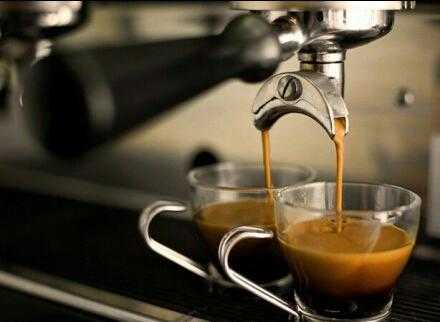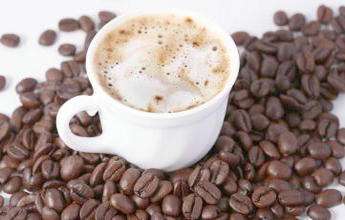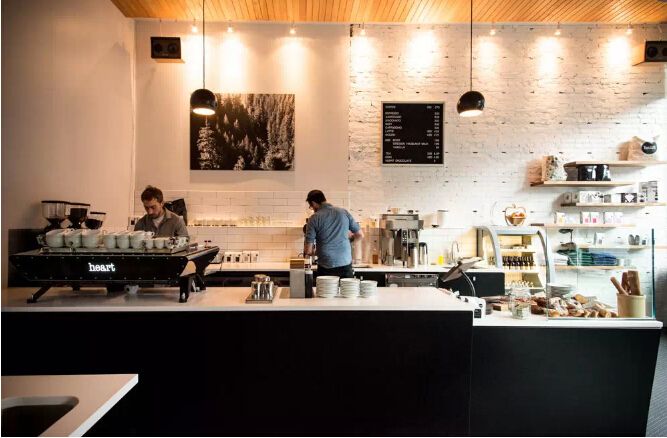Barista essential skills, easy cup test
Follow the caf é (Wechat official account vdailycom) and found that Beautiful Cafe opened a small shop of its own.
A cup of delicious coffee is undoubtedly the performance of a barista's ability to intuitively judge the coffee beans, so as to choose the appropriate grinding degree, water temperature, brewing time and water flow. Finally, different concentrations of coffee are provided according to different guests. The slightest change in any of these will affect the taste of the entire cup of coffee. So that's why coffee is fascinating.
Coffee cup test (CUPPING) was first developed around 1890 by Coors Brothers Coffee Company in San Francisco, USA. In order to ensure the quality of each batch of raw coffee beans, we began to carry out two-stage cup tests on imported coffee beans, testing and keeping samples of coffee beans before shipment, and then sampling coffee beans after entering Hong Kong to confirm whether the quality of imported raw beans is consistent with that of sample beans.
To put it bluntly, it is to avoid buying coffee beans with major defects.

So in the beginning, cup testing is actually a secret technology of some large bakeries. Lao WA taught you today a simple version of cup testing, which can exercise our taste buds and olfactory cells, thus increasing the fun of tasting.
The first tools that need to be prepared are:
Three sample beans
(two are the same, the other can be added with some defective beans)
Three of the same cups
Several special spoons for cup testing
A bowl of water
Step 1: standardization
The baking degree of each sample bean is set from the end of the first explosion to the second explosion, the baking time is about 8: 12 minutes, 3 sample beans, one of which adds defective beans, the grinding scale is slightly thicker than that of hand flushing. Take Little Eagle as an example, the scale is # 4.
Step 2: smell incense
Three pieces of coffee powder of the same thickness and importance, packed in three cups, smell its dry fragrance first. Including: sour aroma and flower and fruit aroma catalyzed by fermentation, sweet fragrance of caramelization and Mena reaction, and scorch incense of dry distillation.
Click here if you don't understand these fragrances.
Step 3: water injection
Brew coffee in 93 ℃ hot water within 15 minutes after grinding to avoid oxidation. The ratio of powder to water is 1: 18: 1: 19, soak for 3 minutes, not more than 5 minutes.
Step 4: break the slag
In the fourth minute, measure the broken residue on the back of the spoon with a cup, each cup can be moved three times, and its wet fragrance can be smelled at this time.
Step 5: scavenging
Then remove the coffee grounds from the liquid surface.
Step 6: 70 ℃ sipping
After soaking for 8 ~ 10 minutes, the coffee liquid was cooled to 70 ℃ ~ 72 ℃, and began to appreciate the liquefaction taste and wet fragrance. Sip the entrance with a cup teaspoon and feel the five tastes of sweet, sour, bitter and salty fat first. after swallowing the coffee, don't forget to return to your nose and use your sense of smell behind your nose to appreciate the gasification flavor released by the coffee oil, such as caramel, cream, flower and fruit aromas. and pay attention to the flaw and bitterness of wood, dirt, potions or sour. In addition to the taste of the tongue and the smell of the nose, we also need to experience the taste of coffee, that is, thick and astringent, how smooth the coffee is in the mouth, and if there is a sense of astringency, it means that there is something wrong with the quality.
Step 7: close to room temperature before sipping
When the coffee liquid is cooled below 50 ℃ or at room temperature, be sure to take a few more sips, swallow it and chew it again. At this time, it is easiest to judge the cleanliness, acidity and sweetness of the coffee. Some slight smells can easily be detected by taste and nose smell near room temperature.
The method is up to you.
As long as you drink coffee often, compare more, and practice frequently.
Build a complete coffee flavor memory bank in mind
Everyone can be a competent cup tester.
The world of coffee is not difficult to understand.
Look how hard you are.
Important Notice :
前街咖啡 FrontStreet Coffee has moved to new addredd:
FrontStreet Coffee Address: 315,Donghua East Road,GuangZhou
Tel:020 38364473
- Prev

Coffee knowledge: what is Cuban Coffee
Located in the West Indies, the Republic of Cuba has a detached and pristine natural environment, the beautiful Caribbean Sea and the world-famous Crystal Mountain Coffee. Flavor and taste characteristics: full of particles, uniform taste, tobacco flavor the Republic of Cuba is located in the West Indies, with a detached and primitive natural environment, the beautiful Caribbean Sea and the world-famous Crystal Mountain Coffee.
- Next

The barista tells you why you drink freshly ground coffee.
Follow caf é (Wechat official account vdailycom) and find that Beautiful Cafe has opened a small shop of its own. When you smell the coffee powder, it shows that it is deteriorating and the essence of the coffee is diminishing. If the diameter of the coffee powder is doubled, the volume of a single particle is reduced by 1 × 8, and the surface area of the corresponding total coffee powder is doubled. After the coffee bean is ground into coffee powder, it
Related
- What is the meaning of lactic acid fermentation with coffee bean treatment?
- How to judge the state of foam by sound?
- How does the latte pull out the unicorn pattern? Come to get for a little trick to improve the flower pull!
- Will flower pulling affect the taste of the latte?
- Do you know the history of coffee?
- The difference between honey treatment and sun washing what is raisin honey treatment?
- What kind of milk can a novice use to make coffee foam to keep the foam longer? The correct method and skills of milking tutorial sharing
- Why do washed coffee beans taste sour? Flavor characteristics of washed Coffee
- Introduction to the skill of how to practice the size and height of water injection around the circle of hand-brewed coffee
- How do beginners practice coffee flower drawing from scratch?

